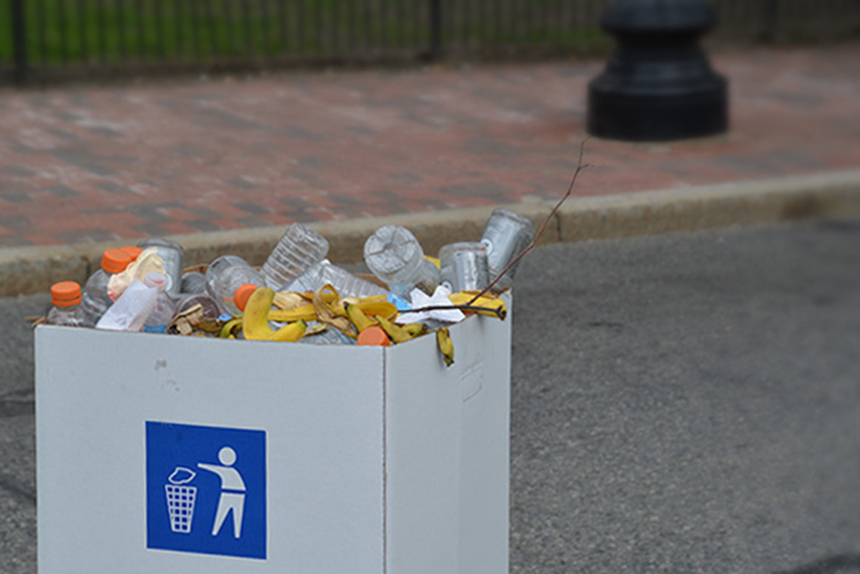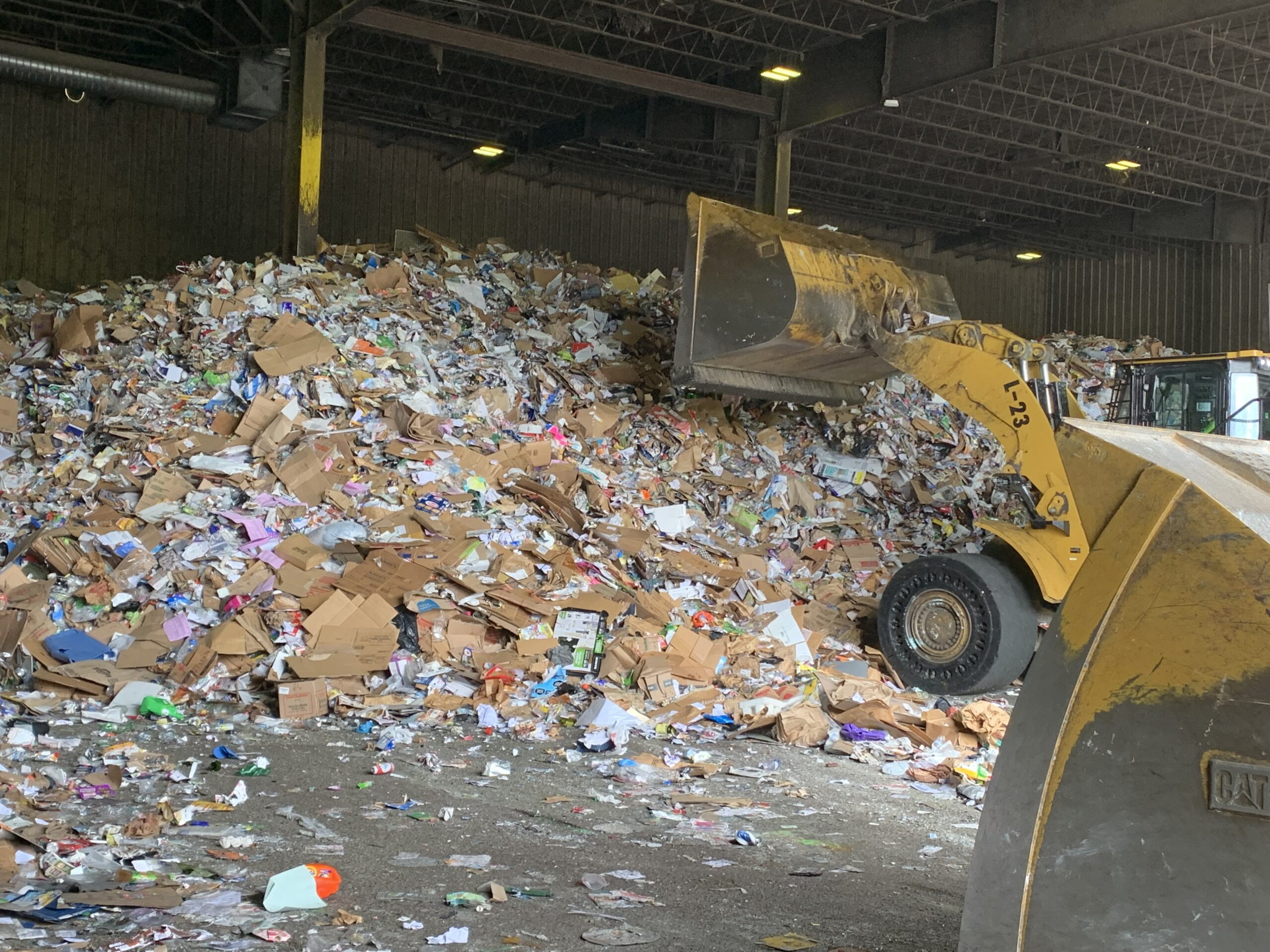E-Waste Responsibility Law Needs Improvement
Recycling of Rhode Island's electronic waste proving to be a challenge
March 6, 2016
Last year Rhode Island state law required electronics manufacturers to pay for every state resident to recycle 5 pounds of electronic waste (e-waste). It turned out, Rhode Islanders had more computers, monitors and TVs lurking in their closets and basements than the people who set the 5-pound target expected. During the final quarter of 2015, manufacturers reached the target, and abruptly stopped paying to recycle e-waste for the remainder of the year.
The higher-than-expected demand for e-waste recycling wreaked havoc on the businesses that collect e-waste, at a time when they were already struggling with low commodity prices for recyclables. Office Recycling Solutions (ORS), the state’s largest e-waste collection business, dramatically reduced the number of municipal collection sites at which it offers its free e-waste collection service from 23 to six, to limit the amount of e-waste streaming in after the state target was hit.
Without reimbursement from manufacturers, each TV and monitor was costing ORS money to recycle. Even computers and laptops are only worth a fraction of their former value, because of the collapse of commodity prices. ORS ended up with a bottleneck of low- and no-value e-waste, which it was still drawing down at the time of this article’s publication.
Indie Cycle, a smaller e-waste collection company that focuses mostly on organizing collection events, also was negatively impacted when last year’s manufacturers’ e-waste recycling target was reached early. Indie Cycle relies on ORS to ship the e-waste it collects to another company, which breaks it into its components. ORS pays Indie Cycle for its services, but as ORS’s take declined, so too did the amount it could pay Indie Cycle.
Residents were left with fewer places to dispose of e-waste responsibly. Many people likely disposed of it with their trash, despite the state’s e-waste law banning many electronic products from the landfill, according to Phyllis Hutnak, co-owner of Indie Cycle.
“I didn’t realize how crucial our free e-waste collection service was to the state, until we had to pull out from the municipal collection locations,” ORS president Brent Mancuso said. “Everyone was kind of up in arms, and the towns had to explain to residents that they had to change the way they were doing things.”
This year, the manufacturers’ e-waste recycling target — set annually by the Department of Environmental Management (DEM) based on a recommendation from the Rhode Island Resource Recovery Corporation (RIRRC) — has been raised to 6 pounds per Rhode Islander. Between the higher target and ORS’s major reduction in municipal collection locations, it’s unlikely that the state will come up against the target again this year.
Last year, however, revealed serious issues with Rhode Island’s e-waste management that must be addressed.
The law
E-waste often contains hazardous materials unfit for disposal in a regular landfill. Computer monitors and TVs can contain leaded glass, while chemicals such as mercury, cadmium, nickel, zinc and silver can be found in circuit boards, according to DEM.
The state’s e-waste producer responsibility law was passed in 2008 and implemented in 2009. Under the law, manufacturers of electronic products covered by the statute are financially responsible to take back and recycle their products at the end of a product’s useful life. The law covers computers, laptops, and CRT and flat-screen computer monitors and TVs from residents and public and private elementary and secondary schools.
DEM and RIRRC annually set a weight-based e-waste target that manufacturers are financially responsible for recycling. Then, each manufacturer is assigned a share of the total target proportional to the amount of e-waste its brand generated during the previous year. This process allows manufacturers to budget for their annual recycling responsibilities.
A manufacturer can opt to join RIRRC’s e-waste program, or it can create its own program — either independently or in tandem with other manufacturers — to collect, transport, track the brands of, break down and recycle its portion of the e-waste target.
The issues
While the intent of the law is good, in practice, e-waste recycling has proven to be a challenge.
The law’s limited scope of covered electronic products means that e-waste collectors aren’t reimbursed for all of the items they collect. Items as common as printers, copy machines and their toner cartridges, for example, aren’t covered by Rhode Island law.
Historically, most e-waste collectors accepted anything with a plug or battery, to promote e-waste recycling by making it easier for consumers. When commodity prices for recyclables were high, accepting toasters, air conditioners, alarm clocks and printers was profitable, even without reimbursement from manufacturers. When commodity prices crashed, those items became a liability, and, in many cases, cost companies to recycle.
Now, companies are rethinking their strategy. Indie Cycle, for example, has started charging for printers and non-flat screen monitors and TVs. Hutnak, Indie Cycle’s co-owner, said she has seen a corresponding dip in e-waste. Her company is beginning to experiment with collection events in which a municipality or environmentally inclined company offset Indie Cycle’s expenses.
“It’s hard to ask people to recycle when it’s going to cost them to get rid of their stuff,” she said.
Another issue is that the manufacturers’ shares of the e-waste weight target are set using incomplete data. RIRRC contracts a company from New Hampshire to manage its e-waste program from start to finish. E-waste is collected from five locations — Johnston, Barrington, Coventry, Little Compton and Narragansett — and transported to New Hampshire. The contracted company records the brand of each piece of covered e-waste, breaks it down and prepares it for recycling.
Most manufacturers operating private e-waste programs aren’t reporting their brand sampling data to DEM, according to RIRRC. Without the sampling data from private e-waste programs, RIRRC’s task of determining the shares of the weight-based target that each manufacturer is responsible for recycling isn’t as accurate as it could be.
Another issue is that RIRRC’s collection program has operated at a loss in all but the first year of the program. Each year RIRRC accepts more e-waste at its collection locations than the manufacturers that opt into the state-run program are responsible for paying to recycle. The e-waste collected after the manufacturers’ shares of the target are reached is recycled using money from the RIRRC operating budget.
The solutions
ORS is attempting to avoid a repeat of 2015 by diversifying its business model to include collecting from more businesses and schools, and relying less on residential e-waste and manufacturer reimbursements.
“A lot of businesses know, by law, they cannot throw out their e-waste, but they don’t know how to get rid of it,” Mancuso said. “We can help with that.”
Mancuso said DEM and RIRRC have been good partners, helping address problems built into the state’s e-waste legislation. In December, they organized a meeting with stakeholders to identify problems and discuss solutions.
“(The manufacturer e-waste) take-back program is a good idea that just needs to be amended,” he said.
A bill is being drafted by RIRRC to remedy some of these issues and will be introduced during the 2016 legislative session.
“We are looking to really revamp this program to make sure manufacturers are paying their full share, streamline the program’s administration, and restore convenience to consumers,” said Sarah Reeves, RIRRC’s director of recycling services. “We are looking at a really big change. I don’t know if it will happen, but it will start conversations, and hopefully result in worthwhile changes.”




I wholeheartedly agree with this article because today the issue of processing is in the first place. If this goes on then, environmental problems will destroy our planet. I believe that people should be responsible for their actions and one of these actions should be electronic processing.